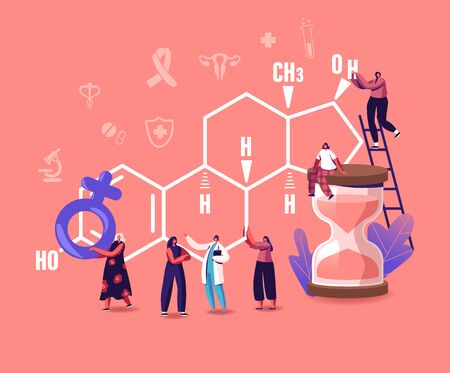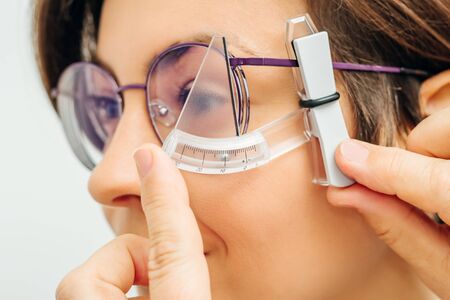1. Understanding Laser Skin Resurfacing
Laser skin resurfacing is a popular cosmetic procedure designed to improve the texture, tone, and overall appearance of the skin. This treatment uses focused light energy to remove damaged skin layers, stimulate collagen production, and reveal smoother, healthier-looking skin underneath.
How Does Laser Skin Resurfacing Work?
The procedure involves directing concentrated beams of laser energy at the skin to remove damaged outer layers and promote natural healing. There are two main types of laser treatments used for resurfacing:
| Type of Laser | Description |
|---|---|
| Ablative Lasers | These lasers remove the top layer of skin, encouraging new cell growth. They are effective for deep wrinkles, scars, and significant sun damage. |
| Non-Ablative Lasers | These lasers work beneath the surface without removing the outer layer of skin. They help stimulate collagen production and are ideal for mild wrinkles and uneven skin tone. |
What Skin Concerns Can It Address?
Laser skin resurfacing can help with a variety of skin issues, including:
- Fine lines and wrinkles
- Acne scars and other blemishes
- Uneven skin tone or discoloration
- Sun damage and age spots
- Enlarged pores and rough texture
Who Is a Good Candidate?
This treatment is ideal for individuals looking to improve their skin’s appearance without undergoing invasive surgery. However, it may not be suitable for those with very dark skin tones, active acne outbreaks, or certain medical conditions that affect healing. A consultation with a skincare professional can determine if laser resurfacing is right for you.
Benefits of Laser Skin Resurfacing
- Smoother and more even skin texture
- Reduction in fine lines and wrinkles
- Improved skin firmness due to collagen stimulation
- Diminished appearance of scars and pigmentation issues
- A more youthful and refreshed look
Understanding how laser skin resurfacing works is essential before considering the procedure. By targeting damaged areas and promoting natural healing, this advanced treatment offers noticeable improvements in both skin health and appearance.
2. The Science Behind Laser Technology
Laser skin resurfacing relies on advanced laser technology to improve skin texture, tone, and overall appearance. But how does laser energy interact with the skin? Understanding the science behind it can help you feel more confident about the treatment process.
How Laser Energy Interacts with the Skin
Lasers work by emitting concentrated beams of light that penetrate the skin at specific wavelengths. These wavelengths target different layers of the skin, depending on the type of laser used. The energy from the laser removes damaged outer layers while stimulating collagen production in the deeper layers. This process helps to reduce wrinkles, scars, and pigmentation issues while promoting smoother, healthier skin.
Types of Lasers Used for Skin Resurfacing
There are two main categories of lasers used in skin resurfacing: ablative and non-ablative. Each type has its own unique benefits and is suited for different skin concerns.
| Type of Laser | How It Works | Best For |
|---|---|---|
| Ablative Lasers (CO₂, Erbium) | Removes outer layers of damaged skin, triggering new skin growth. | Deep wrinkles, scars, severe sun damage. |
| Non-Ablative Lasers (Fraxel, Nd:YAG) | Heats underlying skin without removing layers, stimulating collagen production. | Mild wrinkles, pigmentation issues, overall skin tone improvement. |
The Biological Process Behind Skin Renewal
The effectiveness of laser resurfacing comes from its ability to activate the body’s natural healing response. When laser energy is applied to the skin, it stimulates fibroblasts—cells responsible for producing collagen and elastin. These proteins are essential for maintaining firm, youthful-looking skin.
The Healing Stages After Laser Treatment
- Inflammation: Right after treatment, redness and swelling occur as the body starts repairing damaged tissue.
- Tissue Regeneration: Over the next few days or weeks, new collagen forms, replacing old or damaged cells.
- Maturation: The final stage involves continued collagen remodeling, leading to smoother and firmer skin over time.
The combination of precise laser technology and the body’s natural healing process makes laser resurfacing an effective solution for a variety of skin concerns. By understanding how these treatments work at a scientific level, you can make informed decisions about your skincare journey.

3. What to Expect During the Procedure
If youre considering laser skin resurfacing, understanding what happens during the procedure can help ease any anxiety and prepare you for the experience. Heres a step-by-step guide to what you can expect before, during, and immediately after treatment.
Step 1: Preparing for Your Treatment
Proper preparation is key to ensuring a smooth procedure and optimal results. Your provider will give you specific instructions based on your skin type and medical history, but here are some general steps:
| Preparation Step | Details |
|---|---|
| Avoid Sun Exposure | Stay out of direct sunlight and use sunscreen for at least two weeks before treatment. |
| Stop Certain Medications | Your doctor may ask you to pause retinoids or other medications that affect skin sensitivity. |
| Hydrate Your Skin | Drink plenty of water and use a gentle moisturizer leading up to your appointment. |
| No Makeup on Treatment Day | Arrive with clean, makeup-free skin to allow for proper laser penetration. |
Step 2: The Laser Resurfacing Procedure
The actual procedure is relatively quick, depending on the size of the treatment area. Heres what typically happens:
- Numbing the Skin: A topical anesthetic or local anesthesia may be applied to minimize discomfort.
- Laser Application: The provider will use a specialized laser device to target specific areas of your skin. You may feel a warm or tingling sensation.
- Treatment Duration: Sessions can last anywhere from 30 minutes to two hours, depending on the intensity of the treatment.
Step 3: Immediate Post-Treatment Care
Your skin will be sensitive after the procedure, so proper care is essential. Here’s what you can expect right away:
| Post-Treatment Effect | Care Instructions |
|---|---|
| Mild Redness & Swelling | This is normal and should subside within a few days; apply cold compresses if needed. |
| Slight Tingling or Warmth | Your skin may feel sunburned; avoid touching or scratching the treated area. |
| Mild Peeling | Your skin will start shedding as it heals; do not pick at peeling skin. |
| Avoid Sun Exposure | Sunscreen is crucial—use SPF 30+ daily to protect new skin. |
4. Recovery and Aftercare
Healing Timeline: What to Expect
Laser skin resurfacing involves a healing process that varies depending on the type of laser used and individual skin sensitivity. Below is a general timeline to help you understand what to expect:
| Timeframe | Healing Progress |
|---|---|
| First 24-48 Hours | Redness, swelling, and a sensation similar to a sunburn; skin may feel tight. |
| Days 3-7 | Peeling and flaking begin as new skin regenerates; avoid picking at the skin. |
| Week 2 | Most redness subsides; skin appears smoother but may still be sensitive. |
| Weeks 3-4 | Full healing for mild treatments; deeper treatments may take longer. |
| 1-3 Months | Collagen production continues, leading to further improvements in texture and tone. |
Common Side Effects
Mild side effects are normal after laser skin resurfacing. Here are some common ones:
- Redness and Swelling: Typically lasts a few days to a week.
- Flaking and Peeling: A natural part of the healing process as old skin sheds.
- Sensitivity: Skin may be more reactive to sunlight and skincare products.
- Mild Discomfort: Some patients experience itching or tightness as the skin heals.
Essential Aftercare Tips
Keep Your Skin Hydrated
Use a gentle, fragrance-free moisturizer to prevent excessive dryness and irritation. Avoid harsh exfoliants until your skin has fully healed.
Avoid Sun Exposure
Your skin will be highly sensitive after treatment. Wear broad-spectrum sunscreen (SPF 30 or higher) daily and avoid direct sun exposure as much as possible.
Follow Your Doctor’s Instructions
Your provider may recommend specific ointments or creams to aid healing. Stick to their guidelines to minimize complications and ensure the best results.
No Picking or Scratching
It’s tempting to peel off flaking skin, but doing so can lead to scarring or infection. Let your skin shed naturally for optimal healing.
Avoid Makeup Initially
If your doctor advises against makeup for the first few days, follow their recommendation. Introducing cosmetics too soon may irritate your healing skin.
Stay Hydrated and Eat Well
A balanced diet rich in vitamins A and C can support collagen production and speed up recovery. Drinking plenty of water also helps keep your skin hydrated from within.
When to Contact Your Doctor
If you experience severe pain, excessive swelling, prolonged redness, or signs of infection (such as pus or an unusual odor), reach out to your provider immediately for guidance.
Proper aftercare is crucial in achieving the best possible results while minimizing discomfort and risks. By following these guidelines, you can enjoy smoother, healthier-looking skin after your laser treatment.
5. Is Laser Skin Resurfacing Right for You?
Laser skin resurfacing is an effective treatment for improving skin texture, reducing wrinkles, and addressing discoloration. However, it’s not a one-size-fits-all solution. Before undergoing the procedure, consider several factors to determine if its the right choice for your skin type and concerns.
Factors to Consider
Skin Type
Your skin type plays a crucial role in how well you will respond to laser treatments. Lighter skin tones generally have a lower risk of pigmentation changes after treatment, while darker skin tones may require specific laser types to minimize complications.
| Skin Type | Recommended Laser Types | Potential Risks |
|---|---|---|
| Fair to Light Skin | Ablative lasers (CO2, Erbium) | Minimal pigmentation risks |
| Medium Skin Tones | Fractional lasers, non-ablative lasers | Mild risk of hyperpigmentation |
| Darker Skin Tones | Pico lasers, non-ablative lasers | Higher risk of post-inflammatory pigmentation |
Your Skin Concerns
If youre dealing with fine lines, acne scars, sun damage, or uneven texture, laser skin resurfacing could be beneficial. However, those with active acne, very deep wrinkles, or severe sagging may need alternative treatments like chemical peels or fillers.
Potential Risks and Side Effects
No cosmetic procedure is without risks. Some potential side effects of laser skin resurfacing include:
- Redness and Swelling: Common immediately after treatment but usually subsides within a few days.
- Pigmentation Changes: Temporary darkening or lightening of the skin, especially in darker skin tones.
- Sensitivity and Peeling: The treated area may feel sensitive and experience mild peeling during the healing process.
- Infection or Scarring: Rare but possible if aftercare instructions are not followed properly.
Expected Results and Recovery Time
The results of laser skin resurfacing depend on the type of laser used and your individual healing process. Generally:
- Ablative Lasers: Provide dramatic improvements but require longer recovery (up to 2 weeks).
- Non-Ablative Lasers: Less downtime but may require multiple sessions for optimal results.
- Mild Redness and Peeling: Typically lasts for a few days to a couple of weeks before revealing smoother skin.
If youre unsure whether laser skin resurfacing is right for you, consult with a board-certified dermatologist or medical aesthetician. They can assess your skin type and goals to recommend the best treatment plan.


